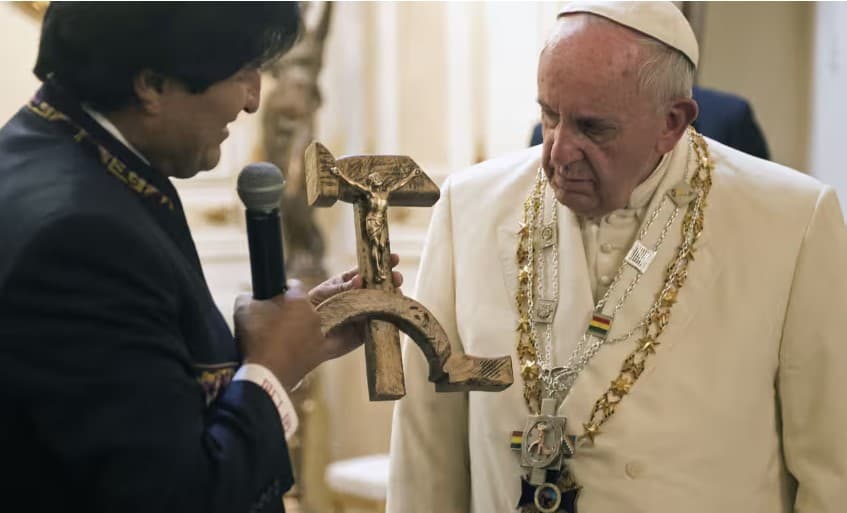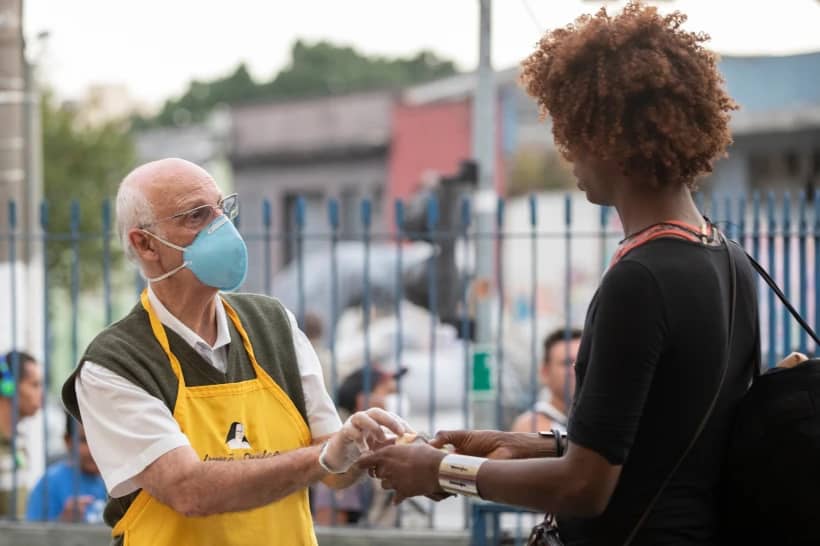SÃO PAULO, Brazil – Although Bolivia is an overwhelmingly Catholic country, observers say church leaders are struggling to help the country cope with a deep political crisis pitting the current president against his precedessor, leaving Catholic personnel scrambling to ameliorate the effects of the conflict rather than resolving it.
The current conflict in Bolivia is between former President Evo Morales and incumbent Luis Arce, former allies and members of the same party. The standoff has produced serious disturbances over the past few weeks, with roads blocked by peasants and high financial losses generated by the protests.
Bishops and priests have repeatedly called on the parties involved in the dispute to dialogue and look for negotiated solutions, but observers say those pleas so far have fallen largely on deaf ears.
Over the past week, the peasant organizations that support Morales and had been blockading roads in several regions of the Andean nation, especially in the area of Cochabamba. Those protests have eased, however, after Arce’s administration reached a deal with the majority in congress and passed a bill authorizing elections for the country’s judiciary.
Those elections, which are long overdue, are seen by Morales and his supporters as a key element in his plan to run for president again in 2025. Last year, Bolivia’s Constitutional Court decided that nobody can be the president or the vice president more than two times.
Morales has already ruled the country twice, starting in 2006. In 2017, he asked the Constitutional Court to be qualified for a third term, which was prohibited by the country’s constitution. The court nevertheless decided it was a human right to be able to run for office, and Morales ended up being elected for the third time.
Facing accusations of electoral fraud and political pressure, however, Morales ended up resigning at the end of 2019 and going into exile in Mexico and Argentina.
Now, observers believe that Morales’s best chance to run again in 2025 is to replace the current justices on the Constitutional Court with his own choices, and then to pressure them to allow him to be a candidate, explained Father Guillermo Siles, a priest in Santa Cruz and an experienced journalist.
“The Congress and the Electoral Court will define a date for the judiciary elections – it will probably happen by August or September. The political dispute will be long,” he told Crux.
Siles said the recent demonstrations were important for Morales, given that he showed that he still has a powerful political base, mainly formed by coca producers in the central region of Bolivia, and that he is able to paralyze the whole country with it.
The government estimated the losses provoked by the protests at $1 billion, a significant blow for a small country with an already weak economy, where the entire national GDP is roughly $44 billion.
Bishop Giovani Arana of El Alto told Crux the recent upheaval has reached down directly into people’s lives.
“In El Alto, people couldn’t find some major food items during the demonstrations, like chicken,” Arana said. “The lack of fuel has also been a problem, but that is not related to the blockades, but to a shortage in production of gasoline by the government.”
In El Alto, a city in the metropolitan area of La Paz which has been a major center for Morales’s and Arce’s Movimiento al Socialismo (“Movement towards Socialism,” known as MAS), most people side with Vice President David Choquehuanca and tend to support Arce in his dispute against Morales, according to Arana.
Most of the people who live in the Andean region used to be deeply Catholic, but since Morales’s first tenure MAS has been able to increase its influence over that enormous segment of the Bolivian population.
“MAS’s platform is indigenist, anti-colonial, and anti-religious. During its tenure, the Andean spirituality has been privileged, while the Church has always been combatted,” Siles affirmed.
The attempt to fuse that anti-colonial, socialist philosophy with Bolivia’s Catholic heritage was memorably symbolized in 2015, when Morales, president at the time, presented a visiting Pope Francis with a crucifix carved into a wooden hammer and sickle.
While many Bolivians of indigenous origin continue identifying as Catholic – their share in the country corresponds to 70 percent – “they don’t care anymore about their pastor’s voice regarding several themes,” Siles said.
“For MAS’s leaders, the Church is a right-wing institution,” he said.
Things only got worse in 2019, during the political movement that ended with Morales’s resignation. Most of the mobilization against his government came from Santa Cruz, a strongly Catholic region in the Western zone of Bolivia where the Andean culture is not dominant.
Catholic political leaders from Santa Cruz such as former governor Luis Fernando Camacho played a key role in the demonstrations against Morales, employing Catholic symbols throughout the process.
Bolivian bishops helped mediate the crisis along with other civic institutions, and Catholic senator Jeanine Áñez took office as the new president. MAS’s leaders have accused the church of taking part in the conspiracy against Morales.
“Since then, the bishops have released statements concerning important social issues, but they couldn’t intervene in the situation. Many of them end up censoring themselves,” Siles said.
Sociologist Julio Cordova, an expert in the religious dynamics in Bolivia, told Crux that the conflicts with the Church that marked Evo Morales’s administration have not been seen in the press during Arce’s tenure, but relations between church and state haven’t improved.
“The government has been mostly indifferent to the Church,” Cordova said.
The current dispute between Arcists and Evists cannot be mediated by Catholics – given that both groups are anti-Catholic – “nor by any other institution,” Cordova said.
In the opinion of Arana, “looking for the church’s help in a moment like that would delegitimize MAS’s version that the episcopate had been involved in Evo Morales’s ousting.”
There’s no clear prognosis concerning the future of the current crisis, Cordova said.
“It’s a struggle to the death. It won’t be solved anytime soon. The protests only stopped now due to the [pre-Lenten] carnival, which is an important festivity for the popular segments involved in them,” Cordova said.
Cordova thinks Arce’s group has an advantage, given that the president controls the federal budget and is able to give employment to thousands of supporters.
“At the same time, the law is on Arce’s side. Morales has no guarantee that he’ll be capable of electing his allies for the courts and that they’ll decide to politically rehabilitate him,” he said.
Cordova emphasized that weekly polls have been showing that Arce has about 22 percent of support, while Evo Morales has 10 percent. But negative opinions about Morales are held by 60 percent of the voters.
In a context of so much instability, Arana said that the episcopate frequently discusses its role regarding the political situation in Bolivia, but there are no easy answers.
“I think that what’s up to us is to be on the people’s side,” he argued.
Siles said poverty has been rising in Bolivia and the country lacks dollars. The government, he said, failed to implement ways of developing the nation, and most of the state companies created over the past decade are not efficient.
“The Church has been looking for the best ways to respond to all those problems. Over the past years, we have been creating initiatives to combat hunger, violence, and poverty,” he described.
In the city of Santa Cruz, over 20 shelters for children are kept by the Church, as well as clinics and schools.
“The Bolivian Church has been also working on relevant projects to assist immigrants and to take care of our common house. On the local level, we keep making a difference for many people,” Siles said.















